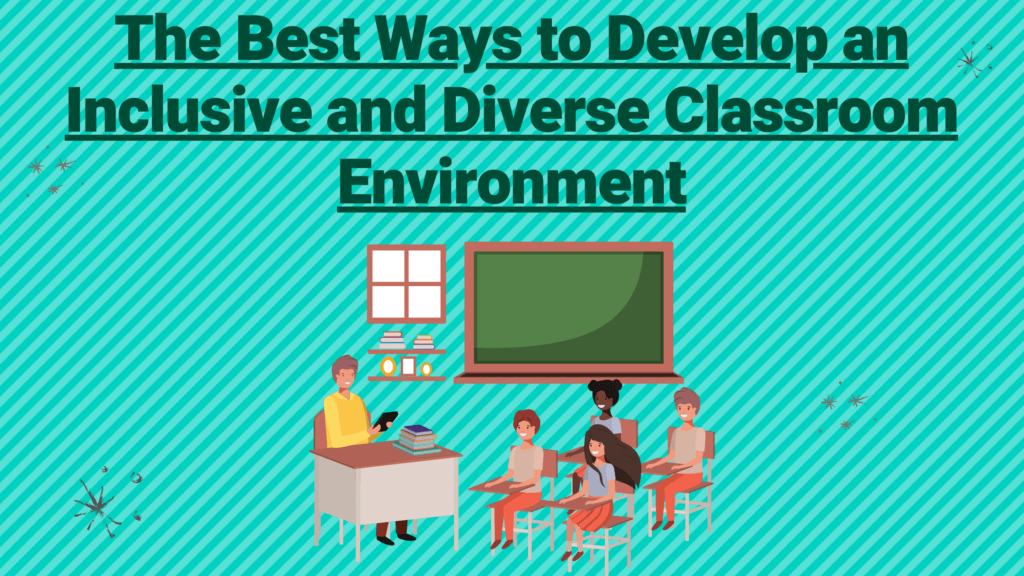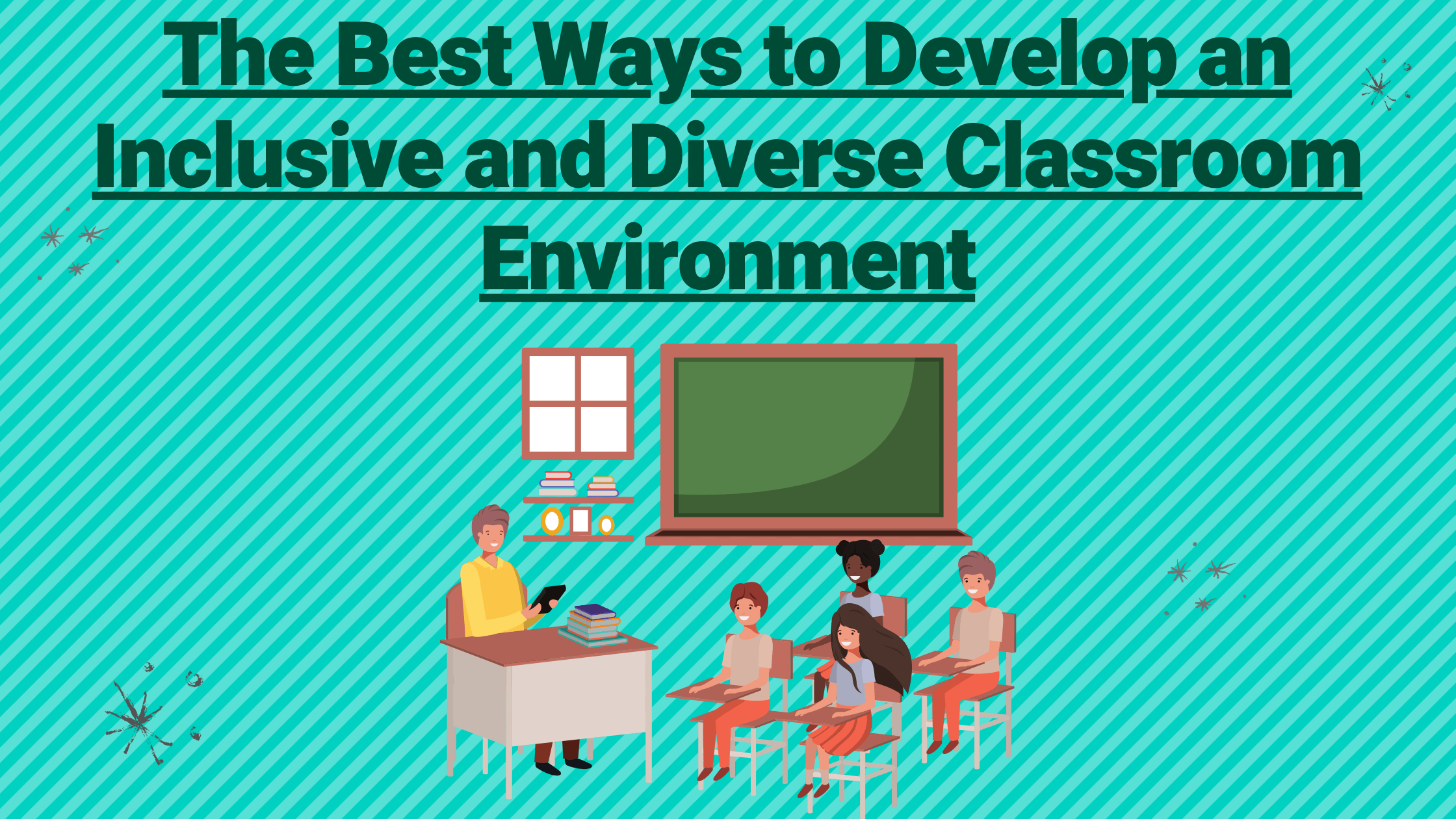
The classroom is one of the first places children and teenagers learn and grow. If children do not feel included and comfortable in the environment that they are growing in, they will not be able to fully settle into themselves and their environment which can create lasting scars and insecurities.
The 21st century has opened people’s eyes up to how important a new kind of safety for children and teenagers as they grow. As a society we used to be focused entirely on physical and emotional safety; but now we have come to prioritize and understand psychological safety too.
Trust, respect, mutual understanding, and other little things that used to be considered not vital are now being understood to be crucial to any and every learning environment. In this piece we are going to take a deep dive into nine of the best ways to develop an inclusive, diverse, and comfortable environment in the learning and classroom environment.
Hopefully these top tips of ours will help you develop your learning environment into the most ideal one.
Article Contents
1. Think About Empathy
Empathy is one of the hardest things to portray as a learning coordinator. Every single person in their life will have different experiences and live a different life; and sometimes it is hard to empathise with children who were raised in different environments or in a different way to how you were.
Everybody learns differently, and it is hard to learn from someone who you do not relate to, especially as a child. As a younger person, your mind is less complex and because of this, you need to relate to someone in order to learn from them.
Empathy is a very key part of this and contributes to a positive and inclusive learning environment.
2. Stay Up to Date with the Times so you can Relate to your Students
This is a different one, as it can be hard to stay up to date with certain issues in the day to day, especially if they do not relate to you or affect you directly. That is why it is so important to push yourself to stay out of your comfort zone.
Keep an eye on the news, stay up to date with social issues and hot button problems when it comes to inclusion and diversity. Try to stay up to date when it comes to these issues so that you can discuss them with your students and talk about things which may affect them directly (now, or in the future).
3. Build up your Equality and Social Justice Vocab
This is a tricky one, and means again, pushing yourself out of your comfort zone. This one involves education yourself and taking time out of your day to educate yourself about issues such as race, gender, sexuality, disabilities; and the discrimination that comes alongside those issues.
Learn the vocabulary and the meanings behind them. Try and understand what a microaggression is, learn how to do culturally responsible, and understand how to nip discrimination and bias in the bud.
4. Learn to Value and Appreciate Different Perspectives
Give your students a voice! Encourage every person who learns in your environment to feel comfortable and confident enough to share their stories and their perspectives with the people that they are learning with.
It is important that your students feel as though they can share how they feel and what they have experienced. This is the most important stepping stone to making your learning environment inclusive and comfortable.
5. Be Obvious about Your Class Rules, Values, and Morals
here are many different morals, rules, and values around different cultures and people groups around the world. It is important that every person who walks into your learning environment understands the basis of operation for the classroom as a whole.
If one person tries to disrupt these or does not understand the way that the learning environment operates; it can ruin the inclusive environment you have worked so hard to create.
6. Learn the Correct Pronunciation of Names and Family Names
This is so important, especially when you have kids with names that are culturally revolving, more difficult to pronounce, or simply have names that make them feel different and sometimes uncomfortable.
Especially when kids are younger, this can be a really difficult trip up and make it hard for kids with more difficult to pronounce names. If you learn how to correctly pronounce these kids’ names, they will automatically feel more included and welcome in your learning environment.
7. Diversify your Teaching Styles to Make it more Inclusive
Try different types of teaching to include people with different learning styles! This is a little known important part of being inclusive as a teacher and leader. When people think of the word ‘inclusive’, they don’t usually think of learning styles.
Your mind usually jumps to the common bits of diversity and inclusion. It is really important to research learning styles and teach in different ways as much as you can.
8. Learn Global Competence and Diversify your Mindset
It is crucial to keep expanding your mindset as someone who is looking to make their learning environment inclusive and diverse. You need to ‘keep up’ in some senses by continuously expanding your knowledge of inclusion as a concept and how best to accommodate people with different cultures, backgrounds, and difficulties.
9. Relax! And Focus your Efforts
Although all these little efforts are important to building and inclusive and diverse learning environment; the most important thing you can do as an educator is just relax and be yourself.
If you are going this far out of your way to make your learning environment inclusive and diverse, you probably already have a great mindset for inclusion anyway! Focus your efforts, but relax and just be yourself. Inclusion should come naturally, otherwise it will feel forced.
About the Author:
Ashley Halsey is a professional writer at Essay Writing Services and Thesis Writing Service who has been involved in many projects throughout the country. Mother of two children, she enjoys traveling, reading and attending business training courses. She also writes for Gum Essays service blog.


